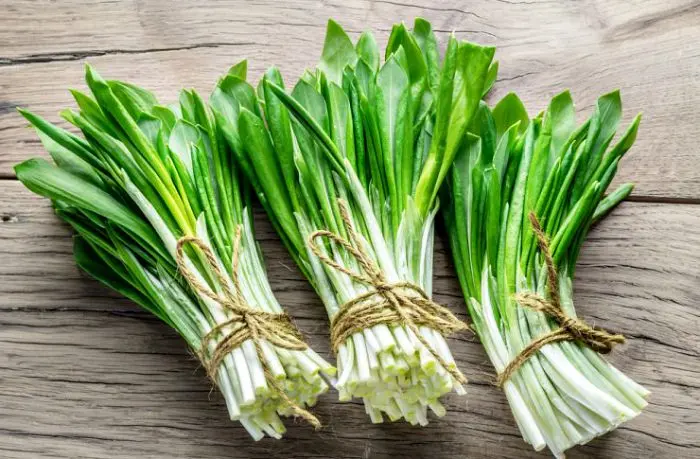Contents
😉 Hello everyone! Thank you for choosing the article “Ramson: benefits and harms for the body, application” on this site! With the arrival of spring, the wild garlic season started.
What is wild garlic and how is it useful
It is an unpretentious herbaceous perennial plant with a pungent garlic smell. Its leaves secrete caustic essential substances that cause other plants to retreat, freeing up large areas of wild garlic.

The wild garlic has several names: bear onion, victory onion, wild garlic, flask, kalba. Linguists claim that the word “wild garlic” is related to the word “bird cherry”. The flowers of these plants are similar.
The bright green leaf of wild garlic resembles a spearhead. These leaves are easily confused with the poisonous leaves of hellebore or lily of the valley. Care must be taken when collecting wild garlic. Leaves are harvested in April-May before flowering, and bulbs are harvested after seed ripening.
All ground parts of the plant and the bulb are eaten. They have a garlic-onion flavor. Leaves are added to salads, soups, cottage cheese, sauces, sandwiches. Ramson is fermented and pickled. When dried, it loses its healing qualities.
In the foothills of the Alps, traces of wild garlic were often found. This suggests its use 5 thousand years ago. During the Middle Ages, the bear bow saved people during epidemics of plague, cholera, and other contagious diseases. Ancient Roman healers used wild garlic to cleanse the stomach and blood.
Nutritional value of wild garlic
Due to the presence of the allicin glycoside and essential oil, the plant has a pungent garlic odor. The stems and bulbs contain a lot of vitamin C, B1, B2. They contain lysozyme (a natural antibiotic), phytoncides, protein, fructose and trace elements.
Ramson: medicinal properties
- stimulates appetite;
- helps with acute respiratory diseases;
- increases the motility of the gastrointestinal tract;
- bactericidal agent;
- for the prevention of the development of thyroid diseases;
- slows down the accumulation of cholesterol in the blood;
- saves from scurvy;
- treats avitaminosis;
- promotes blood thinning;
- lowers blood pressure;
- flu prevention;
- reduces the risk of stroke;
- with lichen and skin rashes (alcohol tincture),
- for rubbing rheumatism;
- treatment of corns and warts;
- with bronchitis, fever (tincture);
- antihelminthic agent; fights pinworms, roundworms;
- helps to normalize metabolism.
Ointment “Urzallin” (for bedsores and non-healing wounds) is made on the basis of plant bulbs.
Ramson: contraindications
- with stomach and duodenal ulcers;
- pancreatitis, gastritis, cholecystitis, hepatitis;
- during pregnancy;
- hypotensive to exercise caution;
- during breastfeeding;
- intolerance;
- epilepsy;
- overuse of wild garlic can cause liver damage, headache, insomnia, indigestion;
- know when to stop! The daily norm is 10-15 leaves.
😉 Share the information “Ramson: benefits and harms for the body” with friends in social networks. See you on this site!









